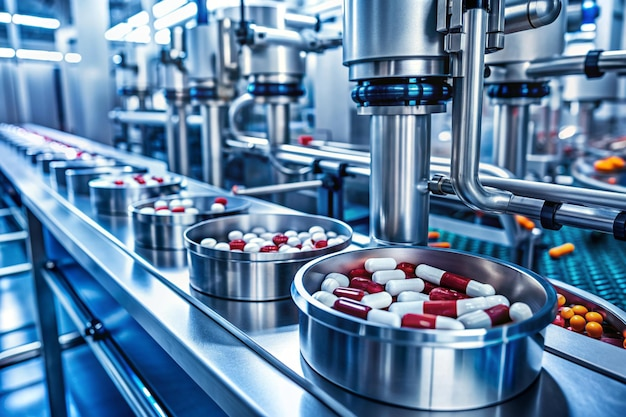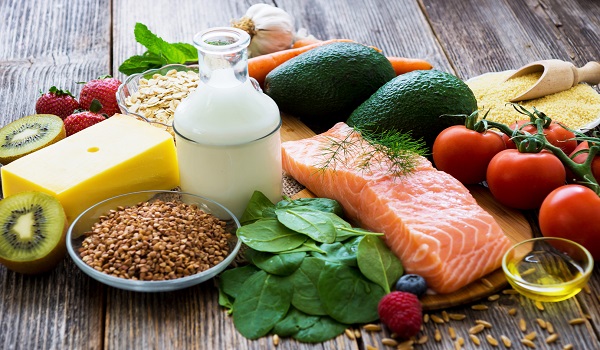
S. Chenna Kesava Reddy1, M. Sainath Rao2, Meghana Rao3, BK. Sandeep Reddy4
1Head (Research & development -Department), Kayne Bio-Sciences Pvt Ltd (Kamala Farms)
2 Market Research Intern, Kayne Bio-Sciences Pvt Ltd (Kamala Farms)
3 CEO, Kayne Bio-Sciences Pvt Ltd (Kamala Farms), Hyderabad
4 Co-Founder, CSO, Kayne Bio-Sciences Pvt Ltd (Kamala Farms), Hyderabad
*Corresponding Author Mail ID: chenna2nalas@gmail.com
Introduction
The global livestock industry faces unprecedented challenges in securing adequate, nutritious, and sustainable feed resources. Traditional fodder production methods are increasingly constrained by climate variability, water scarcity, land degradation, and rising input costs (Rajendran et al., 2024). In this context, hydroponic fodder production has emerged as a revolutionary approach that offers a viable solution to these mounting challenges. This technique involves growing nutrient-rich feed in a controlled environment without soil, using minimal water and space (Rajendran et al., 2024; Ahamed et al., 2023).
Hydroponic fodder systems represent a paradigm shift from conventional agriculture, offering year-round production capabilities, enhanced water use efficiency, and superior nutritional profiles. Recent research has found that hydroponic wheat fodder can be grown without the use of any fertilizers or other additives, making it an environmentally sustainable option for livestock feeding (Scientific Reports, 2024).
Diversity of Fodder Crops in Hydroponic Systems
The versatility of hydroponic systems allows for the cultivation of a wide variety of fodder crops, each belonging to different botanical families and offering unique nutritional benefits. The major fodder crops successfully grown through hydroponic methods include:
Leguminous crops: Alfalfa or Lucerne (Medicago sativa, Family: Fabaceae), Berseem (Trifolium alexandrinum, Family: Fabaceae), and various Clover species (Trifolium spp., Family: Fabaceae) are excellent sources of protein and nitrogen fixation capabilities.
Cereal crops: Wheat (Triticum aestivum, Family: Poaceae), Barley (Hordeum vulgare, Family: Poaceae), Maize (Zea mays, Family: Poaceae), and various cereal straws including Rice straw (Oryza sativa, Family: Poaceae) and Wheat straw provide essential carbohydrates and energy.
Perennial grasses: Timothy (Phleum pratense, Family: Poaceae), Rye grass (Lolium spp., Family: Poaceae), Bermuda grass (Cynodon dactylon, Family: Poaceae), and Para grass (Brachiaria mutica, Family: Poaceae) offer excellent palatability and digestibility.
Tropical fodder species: Guinea grass (Panicum maximum, Family: Poaceae), Napier grass (Pennisetum purpureum, Family: Poaceae), and Rina grass (Chloris gayana, Family: Poaceae) are particularly suitable for warm climatic conditions and provide high biomass yields.
This diversity allows farmers to select appropriate species based on their livestock requirements, local climatic conditions, and nutritional objectives, ensuring optimal feed quality and animal performance.
Understanding Hydroponic Fodder Systems
Hydroponic fodder production involves the cultivation of cereal grains and leguminous seeds in a soilless medium, typically using water and nutrient solutions under controlled environmental conditions. The process begins with the germination of seeds, which are then grown in trays or growing chambers for 6-8 days until they develop into green, leafy shoots with extensive root systems.
Research shows that hydroponic fodder delivers peak nutrition that is maximally digestible (iGrow News, 2024). The controlled environment allows for optimal regulation of temperature, humidity, light, and nutrient supply, resulting in consistent quality and nutritional content throughout the year.
Hydroponic vs. Conventional Fodder Production
The comparison between hydroponic and conventional fodder production reveals significant advantages for the soilless cultivation method across multiple parameters.
- Water Use Efficiency
One of the most compelling advantages of hydroponic fodder production is its exceptional water use efficiency. It takes between 800ml and 1 litre of water to produce one kilogram of fodder, compared with 80 – 90 litres to grow a kilogram of green grass (Hydroponics Africa, n.d.). This dramatic reduction in water consumption makes hydroponic systems particularly valuable in arid and semi-arid regions where water scarcity is a critical constraint.
Results indicated that the yield of barley green fodder produced under hydroponic conditions overtopped the yield under conventional cultivation (MDPI, 2023). The water use efficiency in hydroponic systems is achieved through recirculation of nutrient solutions, controlled irrigation, and elimination of water losses due to evaporation and deep percolation.
- Space Utilization and Productivity
Hydroponic fodder systems maximize space utilization through vertical farming techniques. Research shows that fodder grown in a 9m x 6m facility can provide substantial ecological and economic advantages (Hydroponics Africa, n.d.). The vertical stacking of growing trays allows for multiple production cycles in the same footprint, significantly increasing the productive capacity per unit area compared to conventional field cultivation.
- Time Efficiency
Compared to traditional fodder, which often needs up to two months to grow, you can grow hydroponic fodder in just one week (Agriculture Guruji, 2025). This rapid production cycle enables farmers to respond quickly to feed demands and market fluctuations while maintaining a consistent supply of fresh fodder throughout the year.
- Environmental Control
Hydroponic systems provide complete control over growing conditions, eliminating the uncertainties associated with weather variability, seasonal changes, and climate extremes. This controlled environment ensures consistent quality, reduces crop losses, and enables production in regions with unfavorable climatic conditions for conventional fodder cultivation.
Nutritional Profile of Hydroponic Fodder
The nutritional superiority of hydroponically grown fodder represents one of its most significant advantages over conventional feed sources. Hydroponic fodder is a rich source of vitamin A, vitamin E, vitamin C, thiamin, riboflavin, niacin, biotin, free folic acid, anti-oxidants like β-carotene and minerals (Feedipedia, n.d.).
Enhanced Digestibility
Sprouts are around 90% digestible which is very high. Grains are around 40% digestible (FodderTech, n.d.). This enhanced digestibility translates to improved feed conversion efficiency, reduced feed costs, and better animal performance.
Vitamin and Mineral Content
Hydroponic fodder has more nutrients than traditional fodder dry food or grain. It contains high carbohydrates, minerals, and vitamins (Agriculture Guruji, 2025). The controlled growing conditions and fresh harvesting ensure maximum retention of heat-sensitive vitamins and bioactive compounds.
Protein Quality
The protein content in hydroponic fodder is not only higher in quantity but also superior in quality compared to dried grains. The germination process breaks down complex proteins into more digestible forms, improving amino acid availability for livestock consumption.
Livestock Performance Benefits
Research demonstrates significant improvements in livestock performance when hydroponic fodder is incorporated into feeding programs. In goats, feeding barley hydroponic fodder at 2.5 to 5 kg per day has been shown to enhance growth performance and digestible nutrient intake, particularly in Gir calves (Genesis Publishing Consortium, 2025).
Dairy Cattle Performance
Similarly, hydroponic maize fodder has been identified as an effective calf starter, improving dry matter intake and growth rates (Genesis Publishing Consortium, 2025). Dairy farmers report increased milk production, improved milk quality, and better reproductive performance when hydroponic fodder constitutes a significant portion of the total mixed ration.
Small Ruminant Benefits
For sheep and goats, hydroponic fodder provides excellent palatability and nutritional density. The fresh, green nature of the feed stimulates appetite and improves overall feed intake, leading to enhanced weight gain and reproductive efficiency.
Poultry Applications
Hydroponic fodder can also benefit poultry production by providing fresh greens that improve egg quality, shell strength, and yolk coloration while reducing production costs.
Economic Considerations and Sustainability
The results revealed that the higher green fodder yield (26.64 kgm-2) and dry matter yield demonstrate the economic viability of hydroponic systems (Journal of Scientific Research and Reports, 2024). Despite higher initial investment costs, hydroponic fodder systems offer attractive returns on investment through reduced operational costs, higher yields, and premium feed quality.
Cost-Benefit Analysis
The economic advantages of hydroponic systems include reduced water costs, elimination of pesticide and fertilizer expenses, lower labor requirements, and consistent year-round production. Economic evaluation indicators include returns, cost analysis, and returns on investment, demonstrating favorable outcomes for hydroponic systems (MDPI, 2023).
Environmental Sustainability
Hydroponic systems achieve considerable reduction in contamination and environmental pollution (Scientific Reports, 2024). The closed-loop nature of hydroponic systems minimizes nutrient runoff, reduces carbon footprint through localized production, and eliminates the need for chemical pesticides and herbicides.
Challenges and Future Prospects
While hydroponic fodder production offers numerous advantages, several challenges must be addressed for widespread adoption. High initial capital investment, technical expertise requirements, and energy costs for climate control represent significant barriers, particularly for small-scale farmers.
Discussion on thermal environment requirements for optimal and efficient fodder production highlights the need for improved environmental control systems (ScienceDirect, 2022). Future research should focus on developing cost-effective, energy-efficient systems that can be easily adopted by smallholder farmers.
Technological Innovations and Future Directions
The integration of smart technologies, including IoT sensors, automated climate control, and artificial intelligence-based monitoring systems, promises to further enhance the efficiency and economic viability of hydroponic fodder production. These innovations will enable precision agriculture approaches, reducing operational costs while maximizing productivity.
Research into alternative energy sources, such as solar-powered hydroponic systems, could address energy cost concerns and make the technology more accessible in remote areas. Additionally, the development of low-cost, locally manufactured hydroponic equipment will be crucial for widespread adoption.
Conclusion
Hydroponic fodder cultivation represents a transformative approach to livestock feed production that addresses multiple challenges facing conventional agriculture. The technology offers superior water use efficiency, enhanced nutritional quality, year-round production capability, and significant environmental benefits. While initial investment costs remain a barrier, the long-term economic and sustainability advantages make hydroponic fodder systems an attractive option for modern livestock operations.
Hydroponic systems facilitate year-round fodder production, providing a consistent and sustainable supply of fresh feed (Genesis Publishing Consortium, 2025). As technology continues to advance and costs decrease, hydroponic fodder production is poised to play an increasingly important role in sustainable livestock nutrition and global food security.
The success of hydroponic fodder systems will depend on continued research, technological innovation, and supportive policies that facilitate adoption by farmers across different scales of operation. With proper implementation and management, hydroponic fodder cultivation can contribute significantly to the resilience and sustainability of livestock production systems worldwide.
References
Ahamed, T., Tian, L., Zhang, Y., & Ting, K. C. (2023). A review of remote sensing methods for biomass feedstock production. Biomass and Bioenergy, 171, 106724.
Agriculture Guruji. (2025, February 17). Growing hydroponic fodder step by step guide (7 days). Agriculture Guruji. https://agricultureguruji.com/hydroponic-fodder/
Bhise, S. B., Kadam, A. S., & Kadam, M. S. (1988). Hydroponic barley fodder production. Indian Dairyman, 40(4), 171-173.
Chung, T. Y., Nwokolo, E. N., & Sim, J. S. (1989). Compositional and digestibility changes in sprouted barley and canola seeds. Plant Foods for Human Nutrition, 39(3), 267-278.
Cuddeford, D. (1989). Hydroponic grass for horses. In Practice, 11(5), 211-214.
Fazaeli, H., Golmohammadi, H. A., Tabatabayee, S. N., & Asghari-Tabrizi, M. (2012). Productivity and nutritive value of barley green fodder yield in hydroponic system. World Applied Sciences Journal, 16(4), 531-539.
FodderTech. (n.d.). Hydroponic fodder nutritional information. FodderTech.com. https://foddertech.com/nutrition/
Feedipedia. (n.d.). Hydroponic fodder production: A critical assessment. Feedipedia. https://www.feedipedia.org/content/hydroponic-fodder-production-critical-assessment
Finney, P. L. (1982). Effect of germination on cereal and legume nutrient changes and food or feed value: A comprehensive review. Recent Advances in Phytochemistry, 17, 229-305.
Genesis Publishing Consortium Limited. (2025, July 2). Hydroponic fodder: A sustainable solution for enhancing livestock nutrition and productivity. Journal of Agricultural Research and Sustainability, 2(2). https://www.genesispcl.com/articles/vol-2-issue-2/jars-25-22-0005/
Hydroponics Africa. (n.d.). Hydroponic fodder systems. Hydroponics Africa. https://www.hydroponicsafrica.org/fodder-systems/
iGrow News. (2024, October 18). Exploring hydroponic fodder systems: Sustainable livestock feeding in the face of climate change. iGrow News. https://igrownews.com/hydroponic-fodder-what-is-its-place-in-livestock-feed/
Jediya, L., Chaudhary, J. L., & Mandia, S. S. (2021). Effect of hydroponic barley fodder feeding on growth performance and nutrient utilization in Gir calves. Journal of Animal Research, 11(3), 425-430.
Journal of Scientific Research and Reports. (2024, May 1). Productivity and economics of hydroponic fodders as influenced by harvesting time. JSRR, 30(5), 1-12. https://journaljsrr.com/index.php/JSRR/article/view/2040
MDPI. (2023, January 3). Water use efficiency and economic evaluation of the hydroponic versus conventional cultivation systems for green fodder production in Saudi Arabia. Sustainability, 15(1), 822. https://www.mdpi.com/2071-1050/15/1/822
Naik, P. K., Swain, B. K., & Singh, N. P. (2015). Production and utilisation of hydroponics fodder. Indian Journal of Animal Nutrition, 32(1), 1-9.
Rajendran, D., Kumar, A., & Singh, B. (2024). Sustainable fodder production through hydroponic systems: A comprehensive review. Agricultural Systems, 215, 103842.
ScienceDirect. (2022, June 9). Present status and challenges of fodder production in controlled environments: A review. Cleaner Engineering and Technology, 8, 100454. https://www.sciencedirect.com/science/article/pii/S2772375522000454
Scientific Reports. (2024, August 20). Spatial heterogeneity in the properties of hydroponic wheat fodder and its sustainability. Nature Scientific Reports, 14, 19234. https://www.nature.com/articles/s41598-024-70128-9
Mulch Decomposition Timeline:
- 0 – 120 days (On soil): Mulch film remains intact and functional.
- 120 – 150 days (On soil): Film becomes brittle and starts decomposing.
- By 180 days (After ploughed back into soil post crop harvest):
Completely degrades, leaving no residue.
Why This Matters:
Saves time and reduces costs – Conserves soil moisture, regulates soil pH and temperature and eliminates the need for retrieving plastic remnants and associated labour.
Improves soil and environment – Restores soil health naturally, enhances fertility,
supports carbon sequestration and reduces overall carbon footprint.
Regenerative Agriculture at Scale:
Together with Phitons GreenTech, we are
scaling impact by:
- Promoting climate-smart farming.
- Delivering cost-effective sustainability.
- Empowering farmers with knowledge &
tools
Beyond Agriculture:
Phitons GreenTech innovations also
include:
- Eco-friendly FMCG packaging
- Compostable medical disposables
- Sustainable textile polymers
Conclusion: Farming for the Future: Transitioning to compostable mulch is a necessary
evolution toward sustainable agriculture. With EarthenAgri™, farmers don’t choose between productivity and planet-friendly practices. At Bluedoor Global Solutions and Phitons Green Tech, we lead this
change—because the future of farming shouldn’t cost the earth. Grow responsibly. Join us in building a resilient, regenerative food system that doesn’t cost the earth.
Mail: bluedoorglobalsolutions@gmail.com
Phone: +91 9392071435






